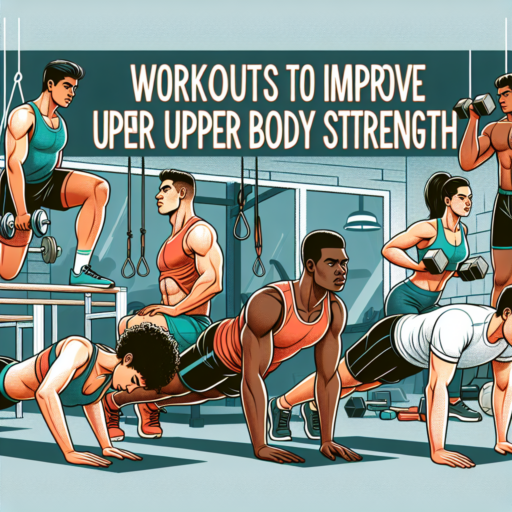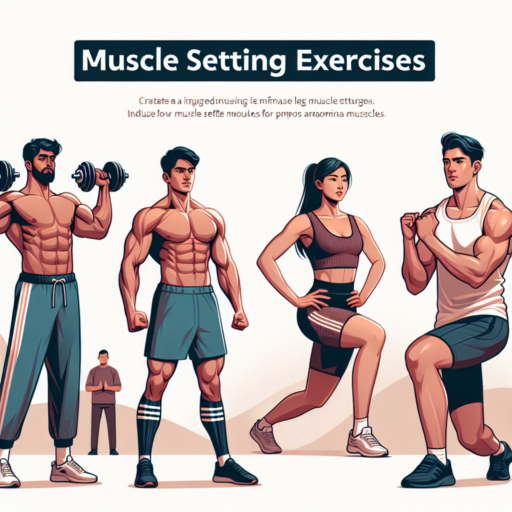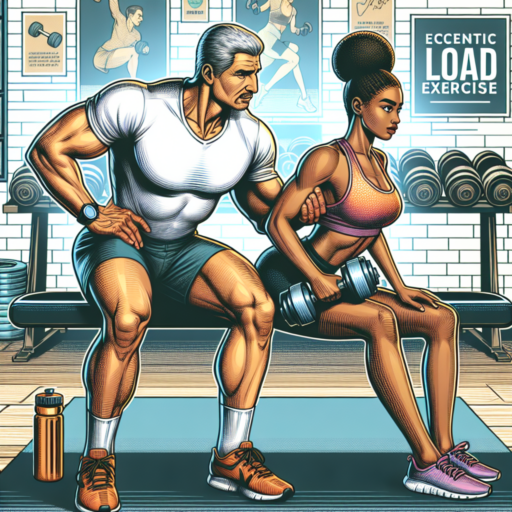Introduction: Enhancing Upper Body Strength through Workouts
Building upper body strength is a fundamental goal for many fitness enthusiasts, athletes, and those new to the realm of physical exercise. Strengthening the muscles in your upper body, including the shoulders, arms, chest, and back, not only augments physical appearance but significantly improves functional daily activities. This can range from lifting heavy objects to performing more complex athletic movements with ease.
The journey to enhanced upper body strength encompasses a variety of workouts tailored to target specific muscle groups. Incorporating a combination of weightlifting, bodyweight exercises, and proper nutrition can lead to noticeable improvements in muscle tone and endurance. It’s essential to approach this journey with consistency and a well-structured plan, to gradually increase resistance and intensity for optimal results.
When venturing into the quest for a stronger upper body, it is crucial to understand the anatomy of the upper body muscles and the role they play in each exercise. Knowledge of proper forms and techniques is just as important to prevent injuries and ensure the effectiveness of your workouts. This understanding paves the way for a balanced and comprehensive upper body training regime that can adjust to your evolving fitness level and goals.
5 Effective Workouts to Improve Upper Body Strength
Improving upper body strength is essential for overall physical fitness and can significantly enhance your day-to-day activities. This guide outlines five effective workouts designed specifically to target and strengthen the upper body muscles, including the shoulders, chest, arms, and back. Incorporating these exercises into your routine can lead to improved posture, increased muscle tone, and greater functional strength.
Pull-Ups
Pull-ups are a powerful exercise for enhancing upper body strength and endurance. They primarily target the back muscles, but also engage your shoulders, arms, and core. To perform pull-ups effectively, ensure that you maintain proper form by pulling yourself up until your chin is above the bar, then lowering yourself back down with control. For beginners, start with assisted pull-ups before gradually moving on to traditional pull-ups as your strength improves.
Push-Ups
Push-ups are a versatile and effective workout for strengthening the chest, shoulders, and triceps. They can easily be adjusted to match any fitness level. Begin by placing your hands shoulder-width apart on the ground, extending your legs behind you. Lower your body towards the ground, keeping your back straight, then push back up to the starting position. To increase the intensity, try elevating your feet or experimenting with different hand placements.
Bench Press
The bench press is a fundamental upper body exercise that targets the chest, shoulders, and arms. Using either a barbell or dumbbells, lie back on a bench and press the weight upwards until your arms are fully extended, then lower it back down to chest level. It’s critical to perform this exercise with proper technique to prevent injuries and ensure optimal muscle engagement. Incorporating the bench press into your upper body workout routine can significantly improve your strength and muscle mass.
Key Benefits of Upper Body Strength Training
When it comes to enhancing overall health and physical capability, upper body strength training emerges as a pivotal component. This type of regimen not only refines muscular definition but also bolsters a host of functional benefits.
Improved Muscular Balance and Stability
Firstly, engaging in regular upper body exercises significantly improves muscular balance and stabilization. This advantage is particularly crucial as it lays the groundwork for better posture and reduces the risk of injury during daily activities. By strengthening muscles across the chest, back, shoulders, and arms, individuals can achieve a harmonious muscular structure that supports efficient movement patterns.
Enhanced Athletic Performance
Athletes across various disciplines can vouch for the benefits of upper body strength training. Enhanced upper body power is closely linked with improved performance in sports and activities that rely heavily on arm strength and endurance. From swimming to boxing, the ability to exert force or sustain muscle engagement over time is markedly improved, giving athletes a competitive edge.
Moreover, incorporating strength training exercises for the upper body assists in accelerating metabolic rate. This means that individuals can enjoy the dual benefits of muscle gain and fat loss, leading to a more sculpted physique. The impact on metabolism also suggests a positive effect on energy levels, providing a boost that is beneficial both in and out of the gym.
In sum, the journey towards building upper body strength is endowed with multifaceted rewards. From fostering a well-balanced musculature to paving the way for peak athletic performance, the strategic emphasis on this area of fitness is undeniably advantageous.
How to Ensure Proper Form and Avoid Injury
Ensuring proper form during physical activities is crucial to avoiding injuries and maximizing the efficiency of your workout. Unlike common misconceptions, maintaining correct form is not only for athletes or fitness enthusiasts but for anyone engaging in physical exertion. It is the key to a safe and effective exercise regimen.
Maintain Awareness of Your Body’s Position
One of the fundamental ways to ensure proper form is by developing a heightened sense of body awareness. This entails understanding the alignment of your body’s parts and how they move together. Practicing exercises in front of a mirror can aid in self-monitoring, allowing you to adjust your posture and movements in real-time. Additionally, focusing on how each movement feels, rather than the quantity of repetitions, can lead to more effective muscle engagement and, consequently, better results.
Utilize Professional Guidance
Another vital component to maintaining proper form is seeking the expertise of professionals. Certified trainers or physical therapists can provide personalized feedback and adjustments tailored to your body’s needs. They can also educate you on the specific mechanics of each exercise, ensuring you’re performing them correctly. Professional guidance is particularly crucial for beginners or those recovering from injuries, as it lays a solid foundation for safe and efficient physical activity.
Adherence to correct form is not just about preventing injuries; it also enhances the benefits derived from your workouts. Incorporating these strategies into your fitness routine can lead to a healthier, more sustainable exercise habit. Remember, the goal is to work with your body, not against it, to achieve your health and fitness objectives.
No se han encontrado productos.
Progressive Overload: The Key to Increasing Upper Body Strength
Understanding Progressive Overload
At its core, progressive overload refers to the gradual increase of stress placed upon the body during exercise training. This principle is foundational in the realm of physical conditioning, especially when it comes to amplifying upper body strength. By meticulously escalating the intensity of your workout regimen—be it through augmenting weight, enhancing the frequency, or elevating the number of repetitions—you signal your muscles to grow stronger and more resilient.
Applying Progressive Overload to Upper Body Workouts
Implementing progressive overload within your upper body routine necessitates a strategic and methodical approach. Start by establishing a baseline—know your current limits in terms of weight lifting and repetition counts for exercises targeting the chest, shoulders, arms, and back. Incrementally, increase the demand on your muscles either by adding more weight, increasing the number of sets or reps, or incorporating more complex exercises. This approach not only propels muscle hypertrophy but also significantly enhances strength over time.
Key Strategies for Effective Progressive Overload
- Gradually Increase Weight Loads: Ensure that the weight increments are manageable but challenging, aiming for a slight increase every week or bi-weekly.
- Vary Your Exercises: To prevent plateaus, mix up your workout routine by switching exercises, focusing on different muscle groups within the upper body.
- Monitor Your Progress: Keeping a detailed log of your workouts can be incredibly beneficial. This record allows you to track increases in weight and repetitions, ensuring that you are continuously challenging your upper body strength.
Incorporating Resistance Bands for Upper Body Workouts
Adding resistance bands to your upper body workouts can dramatically enhance the effectiveness of your exercise routine. Unlike traditional weights, resistance bands offer a unique form of resistance known as linear variable resistance, meaning the amount of tension increases as the band stretches. This feature is crucial for developing strength and endurance in the muscles of the upper body, including the shoulders, chest, and back.
One of the standout benefits of using resistance bands for upper body conditioning is their versatility. They can be used to perform a wide range of exercises that target every major muscle group in the upper body. From bicep curls and tricep extensions to shoulder presses and back rows, resistance bands allow for a full-spectrum workout. Furthermore, they are lightweight and portable, making them an ideal option for those who are traveling or prefer to workout at home.
When incorporating resistance bands into your routine, it is important to focus on maintaining proper form and control. The unique resistance offered by the bands can help to improve muscular coordination and balance, qualities that are often overlooked in traditional strength training programs. By emphasizing controlled movements and proper technique, you can maximize the efficacy of your workout and reduce the risk of injury.
Bodyweight Exercises for Building Upper Body Muscle
Bodyweight exercises are a highly effective way to build upper body muscle without the need for equipment. These exercises rely on your own body weight to provide resistance, making them an ideal option for people looking to enhance their fitness routine at home or while traveling. By incorporating a variety of movements that target the chest, shoulders, arms, and back, you can develop strength, endurance, and muscle mass.
Push-Ups: The Quintessential Upper Body Exercise
Push-ups are a fundamental bodyweight exercise that effectively targets the chest, shoulders, and triceps. They can be easily modified to increase or decrease difficulty, making them suitable for all fitness levels. For instance, elevating your feet increases the challenge, while performing them on your knees reduces it. Consistently incorporating push-ups into your workout routine can lead to significant improvements in upper body strength and muscle definition.
Pull-Ups and Chin-Ups: Mastering Your Own Body Weight
Pull-ups and chin-ups are paramount for developing a strong and muscular back and biceps. Although they require something to hang from, like a sturdy bar, they are incredibly effective in utilizing your entire body weight for resistance. Pull-ups, performed with an overhand grip, focus on the back muscles, particularly the latissimus dorsi, while chin-ups use an underhand grip to better target the biceps and chest. These exercises are intense but rewarding, offering a clear pathway to upper body muscle growth.
Including bodyweight exercises in your fitness regimen is a straightforward strategy for building upper body muscle. By focusing on exercises like push-ups and pull-ups, you can achieve a well-rounded and muscular upper body through consistent and dedicated practice. Remember, progression and perseverance are key to seeing results in your strength and muscular development.
The Importance of Consistency and Recovery in Strength Training
In the realm of strength training, the principles of consistency and recovery stand as two pillars for sustainable progress and optimal performance. Without a steadfast commitment to both, athletes and fitness enthusiasts alike may find their journey towards strength gains stalled or, worse, marred by injury.
Building a Solid Foundation with Consistency
Consistency in strength training goes beyond merely showing up to the gym regularly. It encompasses a disciplined approach to training schedules, techniques, and progressive overload. By adhering to a well-structured regimen, individuals can steadily increase their strength over time, allowing for physiological adaptations that enhance muscle size, function, and endurance. The importance of routine and repetition cannot be overstated, as they are foundational to overcoming plateaus and achieving long-term goals.
Recovery: The Critical Component of Growth
Often overshadowed by the allure of pushing harder and lifting more, recovery is arguably the most crucial aspect of any training program. It is during periods of rest that the body repairs the microtears in muscles caused by intense workouts, which in turn, leads to muscle growth. Integrating proper recovery techniques—such as adequate sleep, nutrition, hydration, and active recovery methods—ensures that the body has the necessary resources to rebuild stronger. Ignoring recovery not only hampers progress but also increases the risk of injuries, which can derail training efforts completely.
Advanced Techniques to Further Enhance Upper Body Power
In the quest for a robust and powerful upper body, it’s essential to go beyond the basics. Advanced techniques can push your limits, sculpting not just muscle strength but endurance and agility. Exploring advanced exercises and methodologies can significantly upgrade your training regime, leading to impressive gains in upper body power.
Integrate Plyometric Push-Ups Into Your Routine
Transform traditional push-ups with a dynamic twist. Plyometric push-ups are not only about pushing up but also propelling your body off the ground. This explosive movement increases muscle power and heart rate, dramatically enhancing upper body strength over time. Incorporating this exercise into your regimen will challenge your muscles in new ways, promoting growth and power.
Maximize with Isometric Holds
Isometric holds might appear simple, yet they’re incredibly effective in fostering strength. Exercises like the plank or holding the top position of a pull-up engage and reinforce muscle stability. When these holds are integrated into your training, they can significantly amplify your upper body power. Adding a 30-second hold at the end of your sets will ensure your muscles are pushed to their limit, fostering endurance alongside strength.
Explore Eccentric Overloading
Finally, enhancing upper body power requires challenging your muscles through all types of contractions. Eccentric overloading focuses on the lengthening phase of a movement, such as lowering from a pull-up or push-up. This technique increases muscle damage, which sounds alarming but is beneficial for growth and strength as it forces the body to rebuild stronger. Incorporating exercises that emphasize the eccentric phase can result in significant increases in muscular power and endurance.
Conclusion: Building a Stronger Upper Body for Better Health
Strengthening your upper body is not just about improving your appearance; it’s a crucial step towards enhancing your overall health. The benefits of nurturing a stronger upper framework extend beyond the superficial, contributing significantly to everyday functionality and well-being. This holistic approach encompasses not merely muscle gain, but also the improvement of posture, reduction in the risk of injuries, and an increase in metabolic rate which collectively pave the way for a healthier lifestyle.
Engaging in exercises that target the chest, back, shoulders, and arms can lead to remarkable improvements in upper body strength. Incorporating a variety of resistance training, be it with weights or bodyweight exercises, ensures a comprehensive development of these areas. Emphasizing consistency and progression is key to achieving lasting results. Over time, these physical enhancements contribute to an elevated sense of confidence and an improved quality of life, underlining the importance of upper body workout routines in achieving optimal health outcomes.
Moreover, the integration of upper body strengthening into regular fitness regimes plays a pivotal role in combating lifestyle-related health issues. Conditions such as cardiovascular diseases, obesity, and type 2 diabetes can be effectively managed, if not mitigated, through regular physical activity that includes upper body exercise. Thus, adopting a fitness routine that places a premium on developing the upper body is tantifimonunt to taking a proactive stance against these health challenges, ensuring a robust framework for a healthier future.




